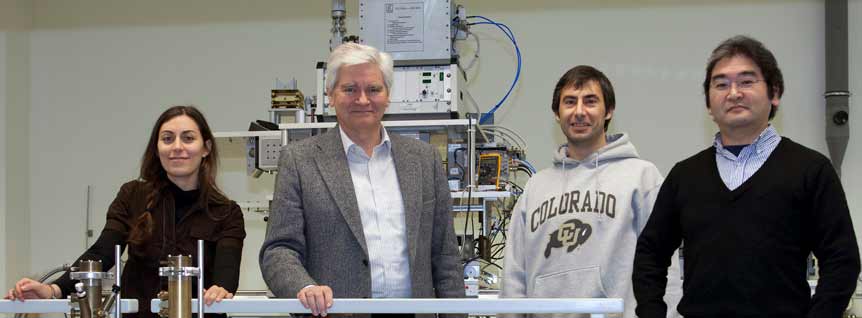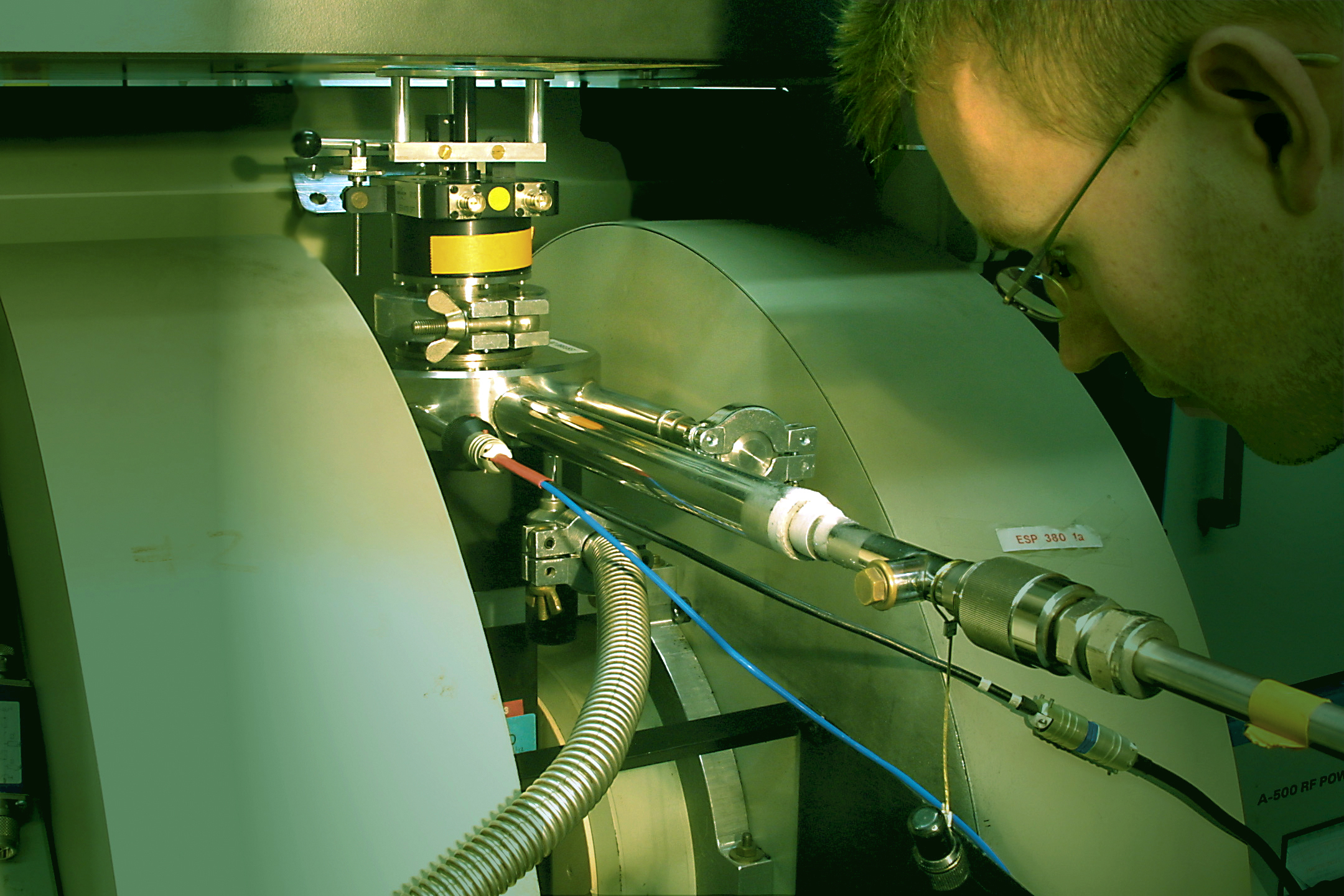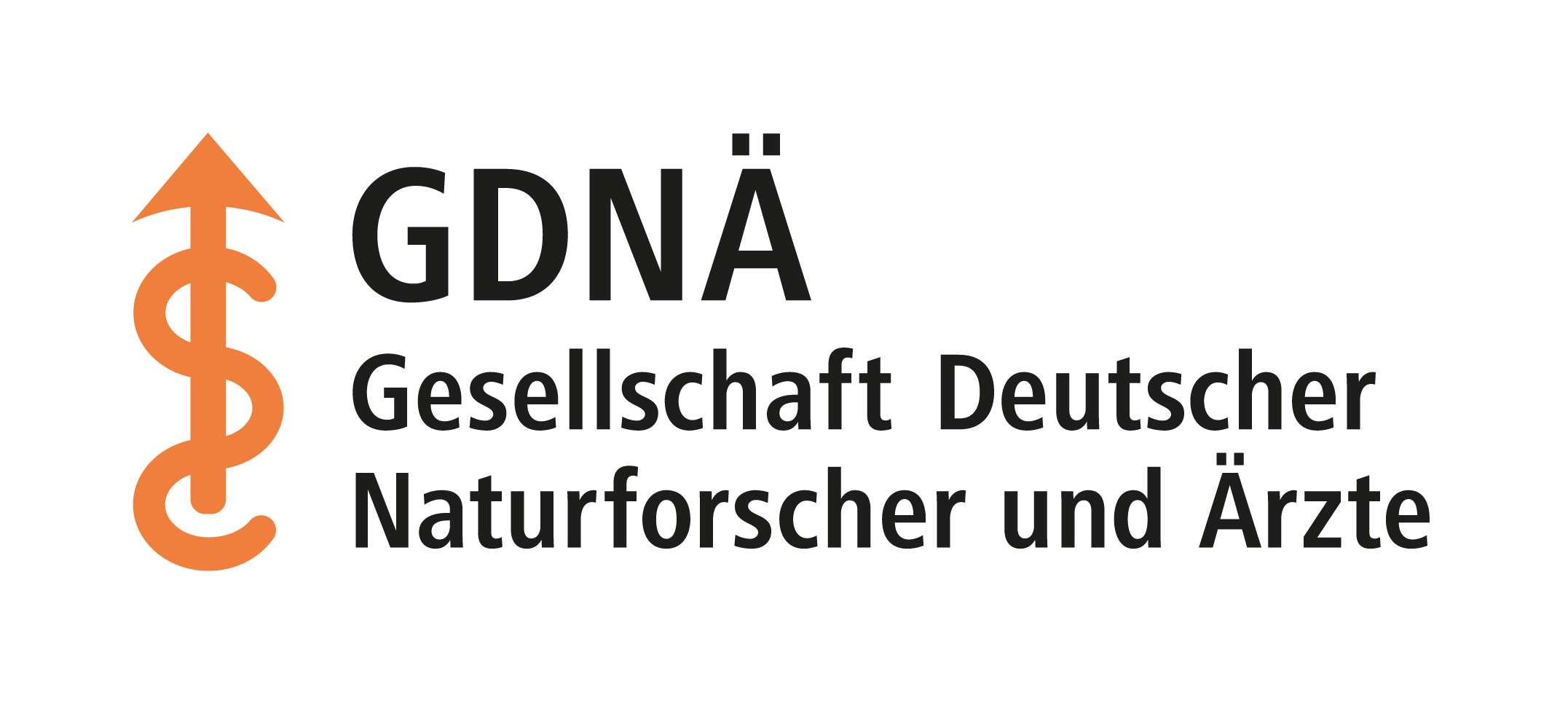“Scientists change the world“
A sustainable energy supply for humanity – this is the visionary goal of Max Planck scientist Wolfgang Lubitz’s research. He also has big plans for the GDNÄ.
Professor Lubitz, you are director emeritus at the Max Planck Institute for Chemical Energy Conversion in Mülheim. How can we imagine your everyday life at the moment?
I’m still often at the institute, but I also work a lot from home at the moment. By and large, it’s about gradually completing my research projects. I’ve been emeritus for almost four years now and want to create more free space for other things. I’m currently making the final corrections to a book chapter.
What is the topic?
The book is about chemical energy storage and in one chapter I describe how solar energy is converted and stored in nature through photosynthesis.
Why is this process so interesting for you?
It is the great model for sustainable energy storage – even though much of the incident, abundant solar energy is lost. At this point I would like to expand a little to clarify the connections: We owe all our food, all renewable raw materials and fossil fuels on earth to photosynthesis. A central step in photosynthesis is the light-induced splitting of water, whereby oxygen is produced as a waste product. This has led to the formation of our oxygen-rich Earth’s atmosphere and also the ozone layer in the stratosphere that protects us, thus creating the prerequisite for the emergence of higher life on our planet. Photosynthesis absorbs enormous amounts of carbon dioxide from the air and converts it into carbohydrates, which ultimately store the sun’s energy. Storage in chemical compounds – in fuels – is by far the most efficient form of storage for energy.

Wolfgang Lubitz with young scientists in a laboratory at the Max Planck Institute for Chemical Energy Conversion in Mülheim. In the background you can see superstructures of a high-field EPR machine. EPR techniques have been used to gain important insights into the electronic structure of catalysts.
So much for biochemistry. How do we now get to technical use?
The idea is to use such processes, for example, to store regeneratively generated electricity and transport it over long distances. In principle, sun and wind supply more than enough clean energy to meet global demand, but where they are needed, they are not always available in sufficient quantities. That is why at our institute we are looking for ways to efficiently convert energy into forms that can be stored and used. Artificial photosynthesis is one possibility that is being intensively researched by us and many other working groups.
What have you already achieved?
In the meantime, we have a fairly precise idea of how natural photosynthesis works. These findings are important, among other things, to realise an efficient splitting of water into its components oxygen and hydrogen in the laboratory. The necessary catalysts play a key role in this process: In nature, these are the enzymes water oxidase and hydrogenases. Roughly speaking, photosynthesis is still familiar to many from school lessons, but our research is about the finer details.
Do you have an example for us?
Nature uses enzymes for its reactions that contain common and inexpensive metals such as manganese, iron and nickel. For chemical-technical use, however, precious metals such as platinum are almost exclusively used as catalysts today, which work very well, but whose deposits are unfortunately limited. Following nature’s example, we are therefore looking for new metal catalysts to make the future large-scale production of hydrogen as efficient as it is environmentally friendly. The goal is therefore the so-called green hydrogen, which not only plays a central role for the energy supply of the future, but also as one of the most important basic materials in industry.
Are there already results?
Catalytic water oxidation and hydrogen production are very intensively worked on research areas worldwide, and considerable successes have been achieved in recent years. However, a perfect catalyst that meets all the requirements in terms of efficiency, stability, scalability, eco-friendliness, material availability and price and has proven itself in practice does not yet exist. So there is still a lot of room for good ideas and developments in this hot field of research.
The entire hydrogen economy is a hot topic at the moment. What chances do you see for it?
We are now very good at generating regenerative electricity, for example with the help of photovoltaics, which today achieve efficiencies of around 25 percent for silicon cells and more than 45 percent for more complex PV cells. Storage remains a problem. Batteries are widely accepted by society, for example in electromobility, but they are not very efficient and also not environmentally friendly. Hydrogen can store many times more energy and its combustion produces only water. It is suitable for large-scale use and forms a very good bridge from the fossil to a sustainable energy era.
Your research in this exciting field is, as you said, gradually running out. Does that mean you will have more time for the GDNÄ in the future?
Yes, and I am looking forward to that. As a member of the Board of Directors, for example, I’m very happy to contribute to the preparations for the 200th anniversary celebration, which is to take place in Leipzig in 2022. Great ideas are being put together there right now. I don’t want to give too much away yet, but the lectures and discussions will take place in the attractive congress centre of the trade fair city and the supporting programme partly in the famous Leipzig Zoo. There will be a student and visitor programme and many highly interesting lectures from different disciplines. For the Nobel Prize lecture we have invited Reinhard Genzel, who discovered the gigantic black hole at the heart of our Milky Way.

Investigating samples of photosynthesis in green light using electron paramagnetic resonance (EPR) spectroscopy.
Founded in Leipzig in 1822, the GDNÄ has a long tradition. What does this scientific society mean to you?
Very much. The GDNÄ has done great things for German science. At its meetings, important scientific findings were presented and debated; there were many disputes, but also consensus. In the era of industrialization, the GDNÄ made a significant contribution to the public learning about and accepting new research results. A caesura was the Nazi era. What these years meant for the GDNÄ should, in my opinion, be examined more closely. The anniversary next year would be a suitable occasion for this.
What future do you see for the GDNÄ?
There are big tasks waiting. On the one hand, there is the immensely important dialogue with the public, but also the interdisciplinary dialogue between the scientific disciplines should be intensified in Germany. The funding agencies are increasingly demanding this, and the GDNÄ could provide important impulses here. Another point is the cooperation with schools. In my experience, interest in mathematics, computer science, natural sciences and technology is growing, because many young people realise how important these subjects are for the future. The GDNÄ is already involved here with its students programme. But in cooperation with other scientific societies we could do much more.
A big programme you are outlining…
…Wait, please, I am not finished yet. I would also like the GDNÄ to raise the possible implications of scientific findings. Often these have led to historical upheavals, just think of the discovery of uranium fission and its consequences in the form of the atomic bomb and nuclear power. Our entire modern life is shaped by research and technology – without it, there would be no internet or modern telecommunications, no antibiotics and vaccines, and no insights into environmental and climate protection or renewable energies. So it is not presumptuous to say: scientists change the world. What I also want is more understanding of the methodology of science. Their results develop in carefully planned and executed experiments, which are often error-prone and have to be validated several times until a reliable result is available. None of this works at the push of a button, it takes time. I am happy to contribute to creating awareness and building trust in science – together with the GDNÄ.

About the Person
Professor Wolfgang Lubitz (71) is director emeritus of the Max Planck Institute for Chemical Energy Conversion in Mülheim an der Ruhr. He relinquished his leadership position, which he had held since 2000, with his retirement in 2017. Before becoming a Scientific Member of the Max Planck Society, the native Berliner worked as Professor of Physical Chemistry at the Technical University of Berlin from 1991 to 2000, as Professor of Experimental Physics at the University of Stuttgart from 1989 to 1991, and as Professor of Organic Chemistry at the Free University of Berlin from 1986 to 1989, where he also studied chemistry and physics, earned his doctorate and habilitated. From 1983 to 1984, Lubitz did research in biophysics at the University of California San Diego.
The scientist wrote a very personal review of his life on the occasion of his 65th birthday at the request of the “Journal of Physical Chemistry”. In it, he describes his path, which led him from simple circumstances in post-war Berlin to an impressive scientific career, brought him together with many interesting personalities and gave him lifelong friendships (see PDF).
In his research, Wolfgang Lubitz deals with energy conversion in natural and artificial photosynthesis and water splitting, hydrogen production and utilisation. Another field of research is the development and application of spectroscopic methods, especially magnetic resonance. His results have been published in more than five hundred scientific papers and have been awarded many prizes.
Wolfgang Lubitz has been a member of the GDNÄ for many years; since 2017 he has been a member of the society’s board of directors. In addition, he has been involved in the Council of the Lindau Nobel Laureate Meetings for almost two decades, of which he has been Vice-President since 2014.

With the President of the Council of the Lindau Nobel Laureate Meetings, Countess Bettina Bernadotte.
Weiterführende Links:
